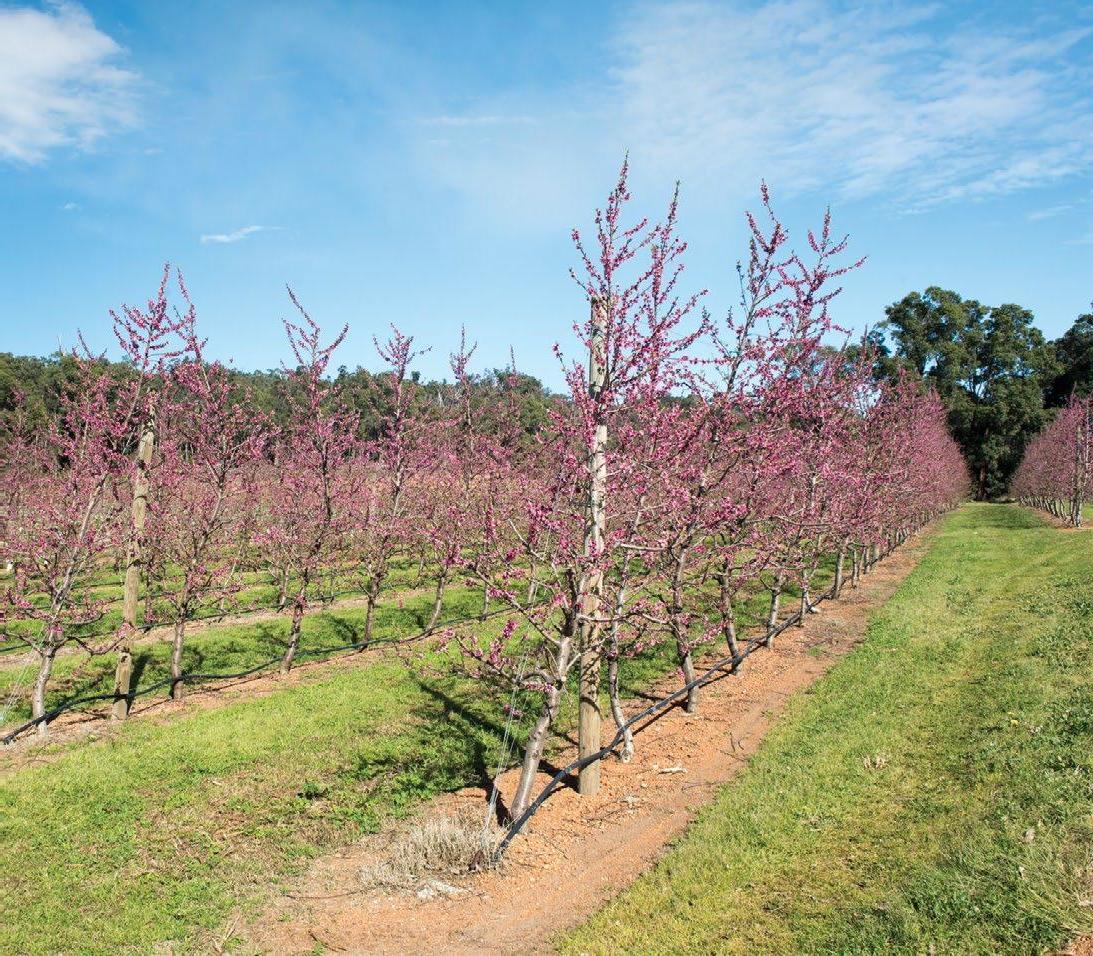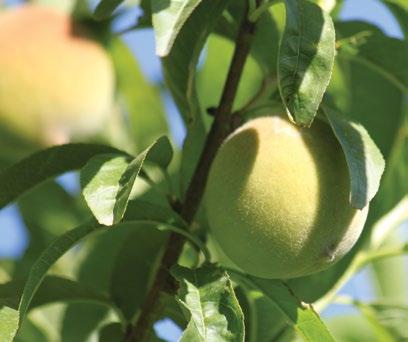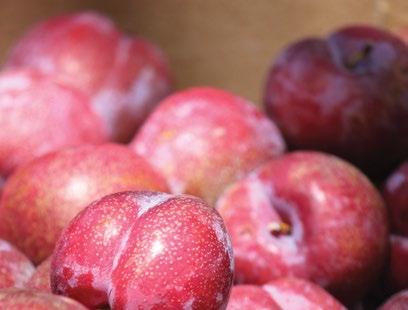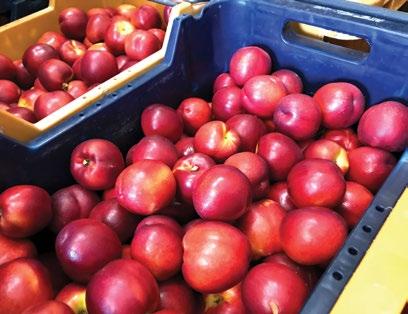
2 minute read
Afourer canopy management
Afourer
canopy
Advertisement
Best practice canopy management techniques.
management project
BY RACHELLE1 JOHNSTONE AND STEVEN FALIVENE2 1 DPIRD 2 NEW SOUTH WALES DPI
WA growers are taking part in a project to develop best practice canopy management techniques that will improve long-term yields and minimise alternate bearing in Afourer mandarins.
The project is funded by Horticulture Innovation Australia and led by Steven Falivene at New South Wales Department of Primary Industries (DPI), while Rachelle Johnstone from DPI and Regional Development will be coordinating activities in WA. Afourer mandarins are recognised for producing high yields (60–90 tonnes per hectare) during the early years of production, sometimes peaking over 100 tons per hectare. However, as the trees grow large the yield begins to decline and alternate bearing becomes more prominent. Some growers have reported average yields of 35 to 40 tonnes per hectare. Excessive vigour and unmanaged watershoot growth are thought to contribute to yield decline in Afourer trees by shading the lower canopy. Alternate bearing contributes to yield decline because the low crop load in ‘off’ years reduces long-term average yields. In the short-term alternate bearing produces low-value small fruit in high crop load years, and in low crop load years leads to oversized fruit. The project will investigate pruning strategies through replicated trials and demonstrations to minimise vigour and water shoots with the aim of improving long term yields and reducing alternate bearing. This project has two objectives. Firstly, to develop best practice canopy management techniques to improve long-term yields and minimise alternate bearing in Afourer mandarins. Secondly, to develop capacity of Afourer growers in Australia by collating information locally and overseas then implementing on-farm trials Case studies conducted on a sample of Afourer growers in Australia highlight the numerous management options currently being trialled by growers including hand thinning, chunk pruning, limb bending, annual limb removal, autumn water shoot removal and mechanical hedging. The trial treatments will investigate multiple regrowth management events aligned with best management practices currently used by some Australian Afourer growers and recommended by South African researchers. The management of the canopy and water shoots is not limited to hand pruning and includes mechanical hedging treatments. It is thought that developing a good limb structure and managing regrowth in autumn are important practices. The case study and background information report also concluded that water shoots dominating the canopy is a common theme amongst growers that have problems with productivity. Afourer growers in Harvey and Dandaragan will be demonstrating different pruning strategies to see what impact they have on fruit size and yield at harvest in 2021.
MORE INFORMATION
Rachelle Johnstone:
rachelle.johnstone@dpird.wa.gov.au
Steven Falivene:
steven.falivene@dpi.nsw.gov.au
Department of
Primary Industries and Regional Development
CITRUS FUND
This project has been funded by Hort Innovation, using the citrus research and development levy and contributions from the Australian Government. Hort Innovation is the grower owned, not-forprofit research and development corporation for Australian horticulture.


update stonefruit













